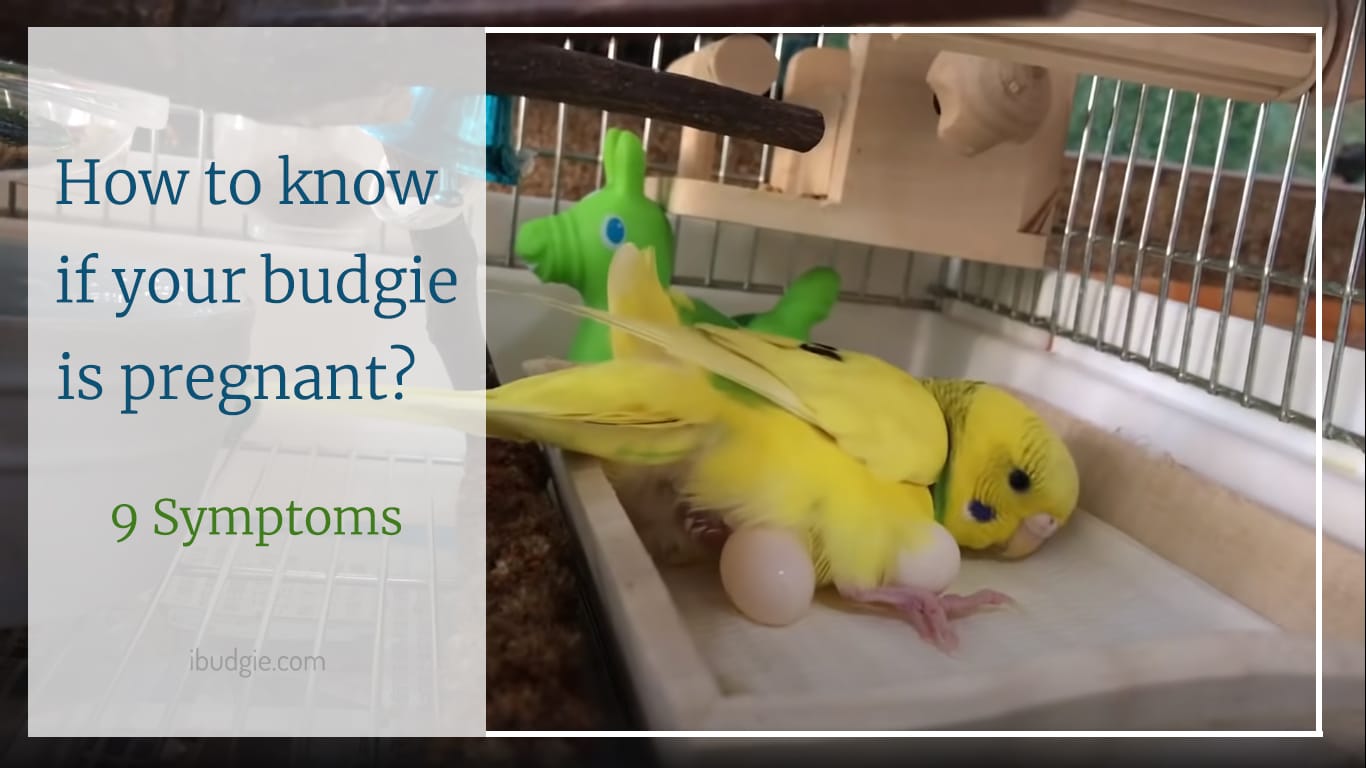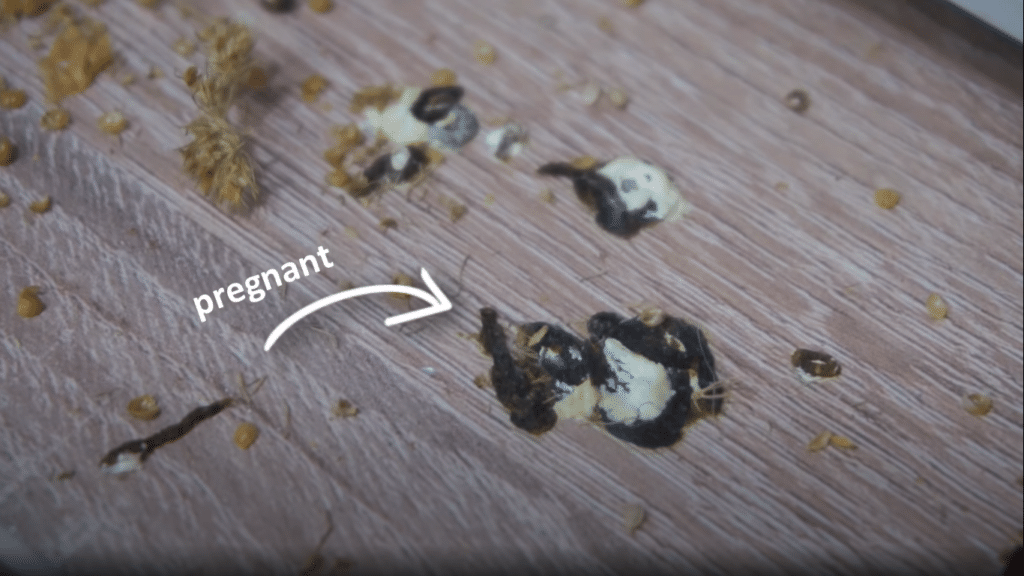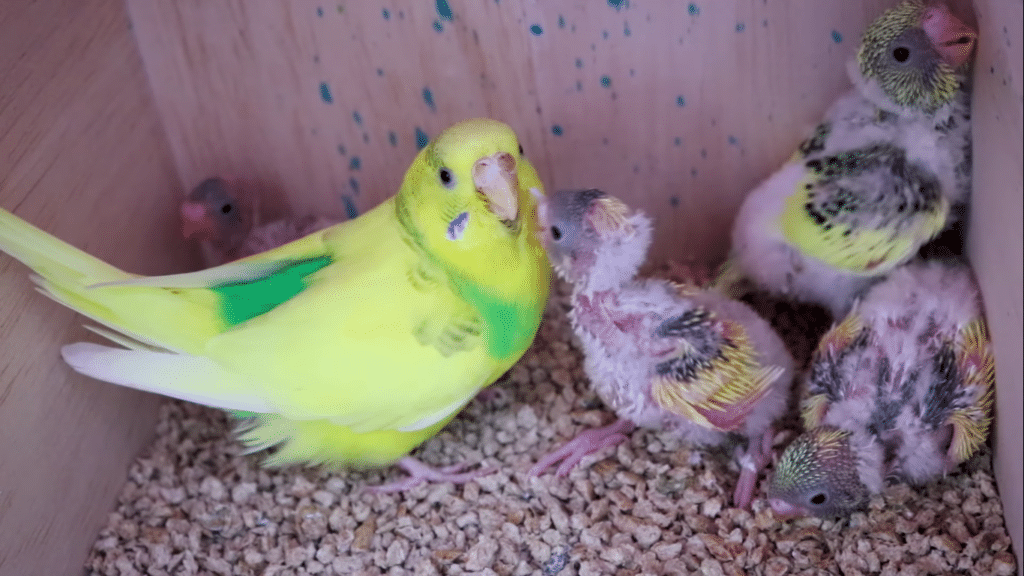9 Prominent Signs of a Pregnant Budgie
Let’s talk about signs of a pregnant budgie, but have you ever seen or heard of budgies giving direct birth to their babies? I haven’t seen even heard so and am sure you too haven’t. In fact, no parakeets including budgies don’t give direct birth to their babies.

Before jumping straight to the signs of a pregnant budgie. Lets find out important technical term. Parakeet budgies are oviparous, meaning that they produce young by means of eggs that develop and hatch outside the maternal body. Youngs from oviparous animals undergo little or no embryonic development within the mother bird, so technically, budgies cannot actually be pregnant.
The equivalent word for pregnant budgies would be gravid. Since budgie birds carry eggs you would say the term gravid as if it were a human you’d say pregnant.
Table of Contents
Signs of a pregnant budgie
Let’s talk about signs of a pregnant budgie, I mean gravid budgies. Important note to understand is, there is nothing visual to notice in a pregnant budgie. But I will point out some behaviors and things to check in budgies that definitely answer ‘how to know if your budgie is pregnant’.
Cere color
Most female budgie’s cere color is a light blue when she is not in breeding mood. As she gets closer to breeding time, her cere turns to an off-white from blue. When she is at her peak breeding mood her cere turns to crusted brown. This is an early sign of your budgie being ready to be gravid.
Mating
Budgie do not need mate to lay eggs. However, an unfertilized egg will not hatch and grow into bird. Budgies become sexually mature at around 6 months of age and prefer to mate for life. If your budgie is about to lay eggs, in order to lay a fertile egg, a female budgie mates with a male, usually more than once. This would be your first look to say your budgie is pregnant. Budgie mate and a week later the female lay eggs. One every other day until they get up to 4-7 eggs then they usually stop.
Interest on breeding box
Budgies are very little concerned about nesting. The female will inspect the breeding box if it’s in the cage. Female budgie frequently goes in and out of the box. After a few days, she starts to spend some time inside the breeding box.
For the budgie who is allowed free-flight in a room. The cobwebby area or the space behind the books on a bookshelf are the sorts of spots that will appeal to her.
If a breeding box is not provided, she will start biting and scratching the corners of the cage, even the food bowl for a suitable spot to lay eggs.
Budgies don’t need nesting material. If you are planning to breed budgies remember not to provide a slippery base breeding box. Eggs will scatter around the box, and may not get hatched. If few of the eggs by luck get hatched, baby budgies may get splayed legs problems.
Larger poop
The egg occupies most of the budgie’s abdomen, droppings get collected in the cloaca for a longer time. So the pregnant budgie poops less frequently than usual. But when she poops, it is larger with slightly different hue as she eats the protein and minerals she needs.

Enlarged budgie’s droppings are the best sign that signifies mating has started and the female is about to lay an egg soon.
Budgie staying at the bottom of the cage
She starts to scratch and tear up the paper base at the bottom of the cage. She will also sit at the bottom of the cage for longer periods of time instead of sitting on the perches like she normally does.
Observe the female budgie in the cage. If she is sitting at the bottom of the cage and straining then she is trying to lay an egg. If she does this for more than a few hours, you should take her to an avian vet. There may be an egg bound which is a life threatening emergency.
Sitting at the bottom of the cage all the time is one of the signs of illness in not breeding budgies.
Weight gain
Gravid animals tend to look a little fat but it’s only for about a day or 2. Which is hard to notice so most budgie owners easily miss it. This is nothing you can visually see unless you measure her weight. The difference is just a few grams.
So this (weight gain) method of knowing if your budgie is pregnant or not may not be decisive until and unless you note her weight difference. Which is again quite infeasible.
Eat more food
If your budgie is pregnant – about to lay an egg, she eats food more frequently than usual. She starts scratching cuttlebone and mineral blocks time and again.
If you are planning to breed, be sure to provide her with a good diet, vitamins, calcium and fresh water.
Swelling vent
Generally, if a budgie is about to lay an egg, her lower belly will be puffy and you might be able to feel the egg if you touch gently. The vent area looks pink and swollen. She seems fluffy and quiet during this time.
Other behavior
If your budgie has a breeding box, she starts to spend most of her time in it before she lays an egg. She constantly cleans her nesting area, scattering and rearranging nesting material in the box. Most of the time, her feathers drop out, which she uses as nesting material. She comes out to eat less frequently, male budgie regurgitates to feed her with regurgitated food.
Most female budgies are aggressive during pregnancy, they don’t want budgies near her breeding box other than her partner. She may even start chirping and biting us as well. So it’s best not to disturb her during breeding. If she feel unsafe she won’t lay egg. If she does, she won’t hatch the eggs.
How to know if your budgie is pregnant
We discussed 9 most common signs of a pregnant budgie. And the most prominent way is, if you saw two opposite sex budgie mating time and again.
Although there’s really no other method to know with certainty that two budgies have mated, they show some signs of mating behavior before they mate. Like male budgie fluttering with a female, regurgitating food back and forth to each other.
If you miss the mating, you may notice the female budgie, more interested in the breeding box, feathering the breeding box as nesting material or having a loose bowel movement. She also seems to be more aggressive than usual, eats more food and minerals and cuttlebone. Poops larger poop. She also seems puffy and swollen around the vent area.
Want to breed budgies?

Breeding budgies is a dream for most budgie owners but they make mistakes unknowingly which results in failure in breeding. For successful budgie breeding read the common budgie breeding mistakes most owners unknowingly make and avoid these mistakes.
Follow the checklist for successful budgie breeding.
Parakeet budgie breeding checklist
- Provide a dry, warm, no slippery, curved base breeding box.
- Provide plenty of fresh diet, minerals and water.
- Provide nesting material such as shredded paper or pine shavings.
- Make sure your budgie is getting at least 2-3 hours of sunlight each day.
- Don’t disturb them, keep cage in silent place.

Worth reading, helpful content
Intersted
It helped me out, thanks.
Buena reseña! me gusto mucho , fue util.
Very helpful, thanks
very nice
Dear Team ibudgies,
i want to know what is the difference between NORMAL MASKING,
OPLINE
TCB
FALLOW
REDEYE
DOUBLE FACTORE
ECB
BLACK FACE
BLACK WING
REE WSSIVE PIED
DONIMANT PIED
CINANAMON
Could you elaborate with pictures ?
i shall be very thanks full if you resolve my tension.
This was really helpful, thanks!
It was very helpful, thank.